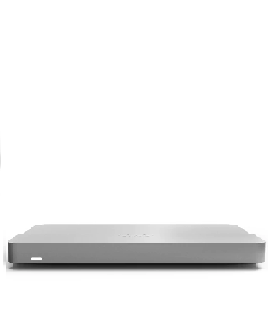
Choosing the right firewall for your business is crucial in ensuring secure and efficient network operations. Firewalls are fundamental components that protect against cyber threats, manage traffic, and support remote work setups. The Cisco Meraki MX series is renowned for its robust security features and cloud-managed solutions, but selecting the right model can be challenging. This article aims to clarify the differences between two popular models: the Meraki MX67 and MX68. Understanding these differences will help you make an informed decision that best suits your business needs.

The Cisco Meraki MX series is designed to provide comprehensive security and simplified network management. These security appliances are cloud-managed, offering several advantages such as easy setup, automatic firmware updates, and centralized management. The series includes various models catering to different business sizes and requirements, ensuring scalability and adaptability. Key features of the MX series include stateful firewall rules, content filtering, intrusion detection and prevention, VPN capabilities, and advanced malware protection. These features collectively ensure secure connectivity and efficient network traffic management.
When selecting a firewall, it is essential to consider the number of users who will be connecting to the network. The Meraki MX67 and MX68 are both suitable for environments with up to 50 connected users. To determine the number of users, assess your current network load and anticipate future growth. This will ensure that the chosen firewall can handle the expected user capacity without compromising performance.
Different businesses have varying security needs based on their operational environment and data sensitivity. Both the Meraki MX67 and Meraki MX68 offer advanced security features, including Cisco Advanced Malware Protection (AMP), content filtering, and intrusion prevention systems. Assess your business’s specific security requirements, such as the need for guest access, VPN failover, and compliance with industry regulations, to choose the firewall that best meets these needs.
Throughput is a critical factor that impacts the overall performance of a firewall. It refers to the rate at which data is processed and transmitted through the network. The MX67 and MX68 both offer impressive throughput capabilities, ensuring efficient handling of network traffic. Understanding your business’s throughput requirements, including VPN throughput, IDS throughput, and stateful throughput, will help in selecting the appropriate model that can support your operations without bottlenecks.

The Meraki MX67 and MX68 share several core features, making them both excellent choices for small to medium-sized businesses. Both models provide robust security, high throughput, and are managed via the Cisco Meraki Dashboard. They support the same number of maximum clients and offer similar wireless access capabilities.
The MX67 is designed as a compact yet powerful security appliance, ideal for small branches and remote locations. It features three dedicated RJ45 LAN ports and one convertible LAN/WAN port.
The MX68, on the other hand, includes additional capabilities with eight dedicated RJ45 LAN ports and two PoE+ ports, making it suitable for environments requiring more extensive LAN connectivity and PoE support.
The MX67 is typically more cost-effective, making it an attractive option for businesses with tight budgets but still requiring robust security features. The MX68, though slightly more expensive, offers additional features that justify the price for businesses needing more extensive LAN connectivity and PoE capabilities.
Both the Meraki MX67 and MX68 offer identical throughput capabilities, ensuring consistent performance across various scenarios. They provide a stateful throughput of 700 Mbps and a throughput with security features enabled at 400 Mbps. Additionally, both models support 200 Mbps site-to-site VPN throughput and 200 Mbps IDS throughput, making them suitable for businesses with moderate to high throughput demands.
The MX67 and MX68 are both designed to handle environments with up to 50 connected users, ensuring reliable performance without degradation. This makes them suitable for small to medium-sized offices and branch locations.
Both models include built-in wireless capabilities, supporting 802.11ac with 2×2 MU-MIMO, providing a maximum data rate of 1.3 Gbps. This ensures robust wireless performance, making them suitable for environments where wireless connectivity is essential.
Both the MX67 and MX68 support dual WAN links and 3G/4G failover, providing network redundancy and ensuring continuous connectivity even if one link fails. This feature is crucial for businesses that require high availability and reliable internet connections.

One of the primary differences between the MX67 and MX68 is the inclusion of PoE capabilities in the MX68. The MX68 features two PoE+ ports, which can provide power to connected devices such as wireless access points and IP cameras. This feature is particularly useful for businesses that need to power multiple devices without using separate power supplies.
The Meraki MX68 has more extensive LAN connectivity options compared to the MX67. It includes eight dedicated RJ45 LAN ports and two dedicated RJ45 WAN ports, providing greater flexibility for network configurations. In contrast, the MX67 has three dedicated RJ45 LAN ports and one convertible LAN/WAN port.
The MX67 is ideal for small to medium-sized businesses that do not require PoE capabilities but need robust security and reliable performance. It is suitable for remote offices, retail locations, and small branch environments where the primary requirement is secure connectivity and efficient network management.
The Meraki MX68 is better suited for businesses that require additional LAN ports and PoE capabilities. It is ideal for environments with multiple wired devices and where powering devices through Ethernet is essential. Examples include offices with several access points, IP cameras, and VoIP phones.
In summary, the Meraki MX67 and MX68 both offer excellent security, performance, and cloud-managed capabilities, making them suitable for various business environments. The primary difference lies in the additional LAN ports and PoE capabilities of Meraki MX68, which make it better suited for more complex network setups. When deciding between the two, consider your specific business needs, such as the number of connected devices, the need for PoE, and your budget. Both models provide reliable and secure connectivity, ensuring your network remains protected and efficient. For tailored advice and to ensure the best fit for your business, consulting with security experts is recommended.
Looking to upgrade your network with Cisco Meraki? Connect with Stratus Information Systems to find the ideal solution for your needs.

Stay informed about our newest releases and updates